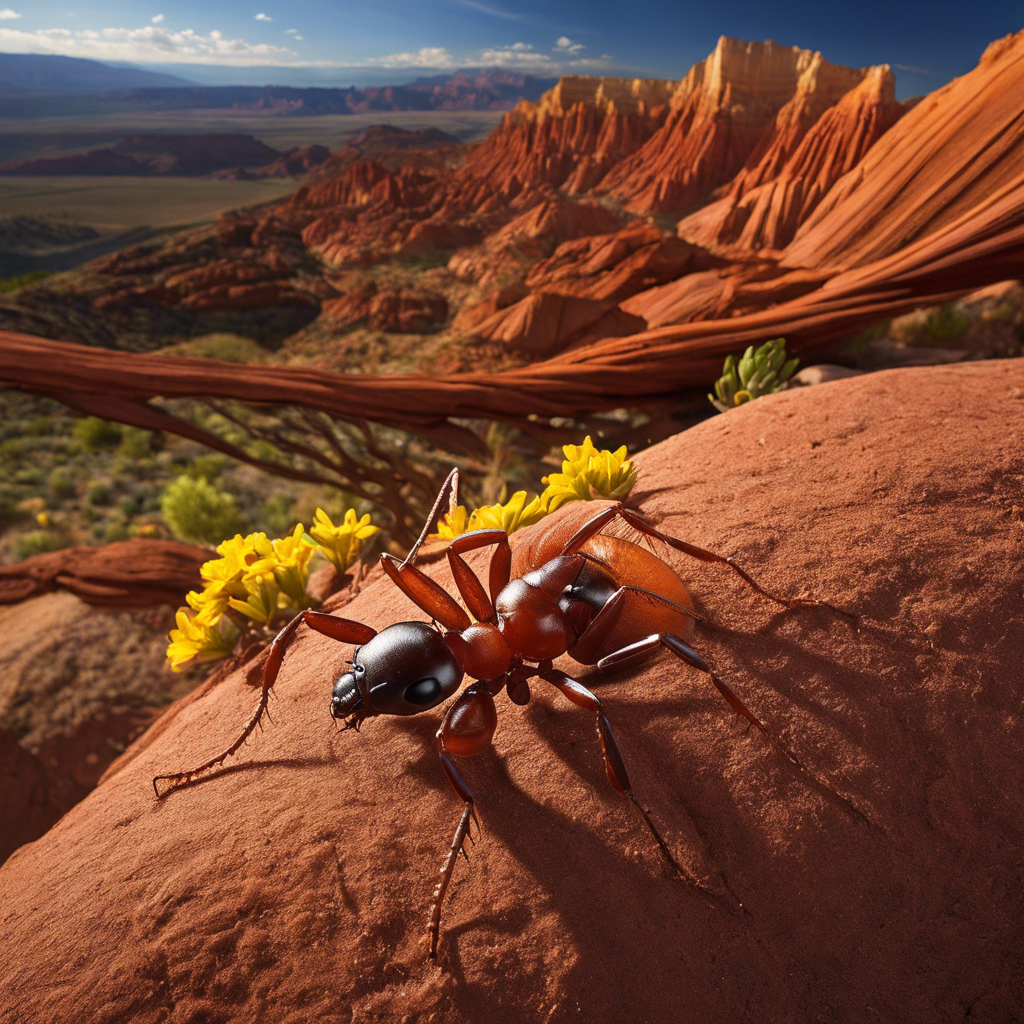Have you ever wondered about the fascinating world of ants in Utah? These tiny creatures play a significant role in our ecosystem, and Utah is home to a remarkable array of ant species.
From the industrious Carpenter Ants to the diligent Harvester Ants, each species has its own unique characteristics and behaviors.
But what makes these ants in Utah truly intriguing is the recent discovery of a new species by biology professor Jack Longino. This discovery not only sheds light on the biodiversity of the region but also hints at the possibility of finding more hidden treasures within Utah’s ant kingdom.
So, let’s embark on a captivating journey as we explore the unique species of ants that inhabit this diverse and enigmatic state.
Key Takeaways
- Carpenter ants are the most common ant species in Utah and can cause damage to structures by excavating wood.
- Harvester ants are known for building massive ant hills and mainly feed on gathered seeds and small insects.
- Pavement ants are commonly found in and around buildings, nesting beneath rocks and in wall voids.
- Pharaoh ants are small in size and challenging to control as they nest within household structures and can have large colonies with multiple queens.
- Velvety tree ants have smooth and velvety dark abdomens, construct nests in dead wood within trees, and have an omnivorous diet.
Carpenter Ants in Utah
Carpenter ants in Utah are the most common ant species found in the region. They exhibit a range of colors and sizes, typically varying between 1/4 inch to 3/4 inch in length. These ants primarily feed on dead and living insects, honeydew, and sweets like honey. However, their presence can pose a threat to structures as they excavate wood, potentially causing significant damage.
It’s important to note that carpenter ants in Utah emerge between April to October, and they can be attracted to flood-damaged or decaying wood indoors. To prevent infestations, it’s crucial to keep wood piles elevated and seal entry points at the base of your home.
In case of an infestation, treatment methods may include fogging the structure, applying crack/crevice spray, and drilling into walls for deep infestations.
Harvester Ants in Utah
Harvester ants in Utah are known for their unique characteristics and behavior in the region. These fascinating insects build massive ant hills and can establish colonies in yards, creating a captivating scene in the landscape.
Ranging in size from 1/4 to 1/2 inches, harvester ants possess a distinctive two-segmented pedicel and spines on their midsection, adding to their visual appeal. Their diet consists mainly of gathered seeds, small insects, and arthropods, showcasing their role as important seed dispersers in the ecosystem.
With their aggressive behavior and preference for open, sunny areas, harvester ants emerge in Utah from June to October, adding vibrancy to the environment.
What truly sets them apart is their ability to adapt and thrive in Utah’s desert climate, highlighting their resilience as a unique species in the region.
Pavement Ants in Utah
Pavement ants, commonly found in and around buildings in Utah, are the primary nuisance ants in the region. These ants have workers of uniform size, governed by a single queen. They have brown to black bodies with lighter legs and antennae. Pavement ants have a waist consisting of two nodes and 12-segmented antennae with a club. They have a preference for sweet and greasy foods and are known to nest beneath rocks and in wall voids. In Utah, pavement ants are active from March to November. To help you visualize their characteristics, here is a table showcasing the distinguishing features of pavement ants:
| Feature | Description |
|---|---|
| Body Color | Brown to black with lighter legs and antennae |
| Worker Size | Uniform size |
| Waist | Consists of two nodes |
| Antennae | 12-segmented with a club |
Understanding the unique characteristics of pavement ants can assist in identifying and managing these nuisance pests in Utah.
Pharaoh Ants in Utah
Pharaoh ants, commonly found indoors in Utah, are known for their small size and diverse diet. These ants measure between 1/16 to 3/32 inches and have a broad palate, feasting on everything from deceased insects to grease and dog food.
Their nesting behavior within household structures is a defining characteristic, with colonies housing up to 300,000 workers and multiple queens. Pharaoh ants have distinctive abdomens, and their nesting habits and dietary preferences make them challenging to control.
Their discovery and naming by biology professor Jack Longino in Utah contribute to the field of entomology and enhance our understanding of the state’s biodiversity. The presence of Pharaoh ants in Utah emphasizes the potential for discovering new ant species in unexpected locations, highlighting the significance of ongoing research and species documentation.
Velvety Tree Ants in Utah
Velvety Tree Ants (Liometopum occidentale), known for their smooth and velvety dark abdomens, inhabit Utah and play a significant role in the local ecosystem. Ranging in size from 1/10th to 1/4 inch, these unique species have an omnivorous diet, consuming insects, plants, honeydew, wood, and carrion.
The ants construct their nests in dead wood within trees, stumps, and logs. When threatened, they display aggression by delivering a painful bite and spraying secretions onto intruders. Their emergence in Utah occurs from April to September/October, contributing to the ecological balance of the region.
The discovery of Velvety Tree Ants adds to the understanding of Utah’s diverse ant species and their adaptations to the unique climate. Observing these fascinating creatures fosters a sense of belonging and appreciation for the intricate ecosystems that exist in our own backyard.
Frequently Asked Questions
What Are the Big Ants in Utah?
The big ants in Utah are a fascinating species with unique behaviors. They form complex colonies and thrive in various habitats across the region. Exploring their behavior and habitats contributes to our understanding of Utah’s biodiversity.
What Is the Most Unique Ant Species?
The most unique ant species in Utah showcases unusual behaviors and adaptations in Utah’s unique environment. Its ecological significance highlights the importance of continued research and documentation for maintaining ecological balance.
Do Harvester Ants Live in Utah?
Yes, harvester ants do live in Utah. They do not hibernate but build intricate tunnels and clear vegetation. They are small, reddish-brown, and have painful bites. They do have stingers, making them unique.
How Do I Get Rid of Black Ants in Utah?
To get rid of black ants in Utah, you can use effective ant control methods like natural remedies. These remedies can eliminate the ants and prevent future infestations, ensuring a pest-free environment in your home.




